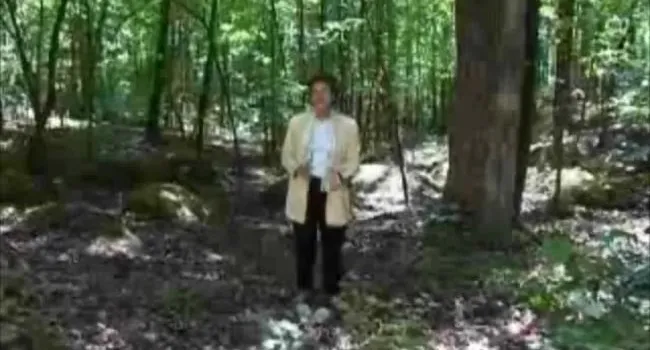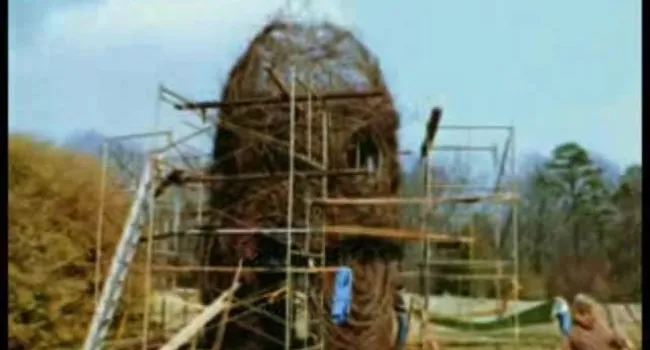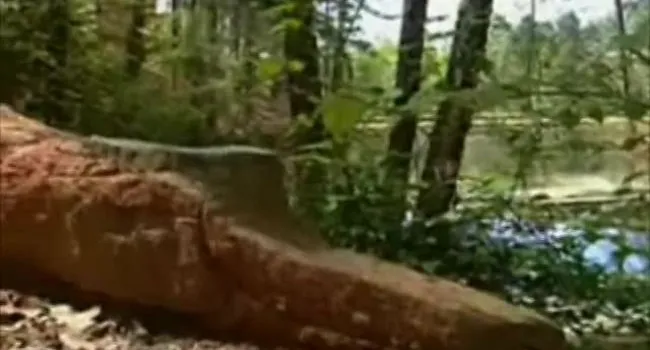Artworks in the nature-based sculpture program are categorized as "ephemeral" and "extended ephemeral." Ephemeral work has a relatively short life span. Works like Patrick Daugherty's Sittin' Pretty (1996), an architectural sculpture made with woven limbs and branches, no longer exists outside of photographs. Rain, snow and decay dismantled the vulnerable sculpture as time and exposure took over the sculpting process.
Extended ephemeral work, though somewhat resistant to decay, is still not part of a "permanent collection." Durable elements such as stone and rammed earth, and the use of living, growing plants in the sculpture help extend the lifespan of the work. Herb Parker's Crucible (1995), a construction of steel, cement, stone and earth, can still be experienced at the garden. Over the past ten years, the sculpture's dome top grew over with mosses and ferns and was scarred from viewer explorations to the top of the structure. After a set of additional changes and fortifications in 2005, the sculpture should be intact, though under constant growth, decay and change, for the next ten years or more.






